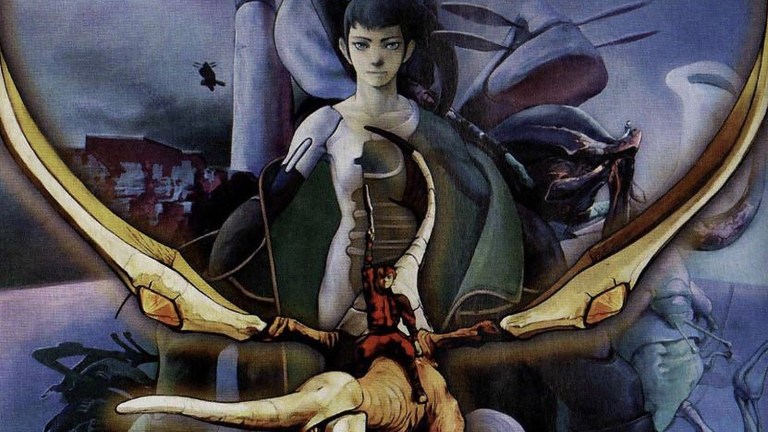How Panzer Dragoon Saga Became Gaming’s Greatest Lost RPG
Panzer Dragoon Saga doesn't cost thousands of dollars because it's one of the best RPGs ever but rather because the game is truly lost. How did that happen?

This April marks 25 years since Panzer Dragoon Saga’s North American release for the ill-fated Sega Saturn. Despite critical acclaim that’s only grown in the intervening years, the game has still never been re-released and has become something of a myth among the most hardcore retro RPG fans.
The story of Panzer Dragoon Saga’s development has almost become inseparable from the game itself. It’s a tale of ambition and accomplishments, as well as a sad reminder that no game is so great that it can’t be lost in the pitfalls of the modern gaming industry.
Sega’s Own Final Fantasy
Sega had done the seemingly impossible in the early ‘90s by challenging (and sometimes outselling) Nintendo with its 16-bit Genesis console. Expectations were high for the 1995 North American release of the Saturn, but what followed was a textbook example of how not to launch a console.
Plenty has been written about what contributed to the massive failure of the Saturn in the U.S. An early surprise launch alienated retailers and meant few developers had games ready for market, the console itself was notoriously difficult to program for, plans to release an original Sonic the Hedgehog game were scratched, and constant disputes between Sega of Japan and Sega of America kept the company from doing much of anything to fix any of these mistakes.
The result was the Sony PlayStation immediately outselling the Saturn when it launched a few months later. When the Nintendo 64 hit shelves in 1996, that was essentially the final nail in the coffin for the Saturn in the West.
Though Sega itself was very publicly imploding at the time, the Saturn still managed to build a very respectable library of titles. One launch game in particular, the rail shooter Panzer Dragoon, impressed gamers and critics alike with its rich 3D graphics, epic soundtrack, and post-apocalyptic fantasy setting.
While the gameplay was somewhat similar to Star Fox, the next-gen graphics of the time blew away Nintendo’s early attempts at 3D, and the mechanics and setting were just different enough for it to carve out its own identity. A sequel, Panzer Dragon II Zwei was quickly greenlit, and even better received upon its release in 1996.
But as Zwei entered development, Team Andromeda was given another directive from Sega: create a Panzer Dragoon RPG that could outsell Final Fantasy. It was a seemingly impossible task. In hindsight, there was probably no amount of money could have accomplished that goal, but Panzer Dragoon Saga, the game that Sega ultimately produced, is arguably better than any Final Fantasy game of the era, even if it only saw a fraction of that series’ sales.
Panzer Dragoon Saga: An RPG Ahead of Its Time
Set in the world of its predecessors, Panzer Dragoon Saga tells the story of a mercenary named Edge who joins forces with a mysterious dragon to get revenge on the maniacal Black Fleet. On paper, it’s a largely familiar premise.
Indeed, in many ways, Saga is much simpler than the typical RPG. It takes only about 20 hours to complete, and there aren’t really any side quests. This was very unusual at a time when almost every RPG was expected to last at least 40 hours even before getting into the optional content. While it initially received some criticism for its short length, in some ways it was a precursor to other, more streamlined action RPGs like Jade Empire and The Outer World.
As part of its sleeker design philosophy, the party is only made up of the mercenary Edge and his dragon. There is little inventory to manage, and most of the gameplay focuses on open-world exploration and the game’s unique combat system.
Encounters are random, and actions are governed by three gauges that charge in real-time. Wait for them all to charge, and you can deal more powerful attacks. At the same time, you can also move in four quadrants around enemies to gain better positioning and deal even more damage (though this will also stop the gauges from charging). Oh, and you can also morph your dragon to improve its attack or defense.
The combination of traditional RPG systems with the rail shooter gameplay of the first two Panzer Dragoon games was revolutionary for the time. There are times when Panzer Dragoon Saga feels like what might happen if a studio tried to release an epic RPG in arcades. It’s fast-paced, fun, yet epic in the traditional RPG sense. Again, this is an area where Saga was way ahead of its time, as it would still take several more years after its release before more JRPG studios began experimenting with such real-time combat options quite as successfully.
One downside of this type of Saga’s experimentation is that the game is somewhat unbalanced and can be very easy. You can quickly become overpowered. But how much of a dealbreaker that comes down to personal preference. This was an era of more difficult games. For some, Panzer Dragoon Saga‘s breeze felt nice.
With all of Sega’s hopes pinned on Panzer Dragoon Saga, Team Andromeda went to work pushing the finicky Saturn hardware to its absolute limits. The game was programmed completely from scratch with fully 3D worlds and voice acting, features that were practically unheard of in ‘90s RPGs. For some perspective, Grandia, which was widely considered to be the Saturn’s RPG killer app when it was released in Japan, was largely sprite-based. Final Fantasy VII on PlayStation had more polygons, but still relied on prerendered backgrounds for much of the game. And that series wouldn’t include voice acting until Final Fantasy X in 2001.
Saga’s graphics are accompanied by an absolutely beautiful and haunting soundtrack that really captures the mystery and desolation of the Panzer Dragoon universe. Give it a listen on YouTube. Even now, few RPGs feature a soundtrack this good. While the Saturn may have had its issues pushing out 3D graphics, the Saga soundtrack alone makes it clear that the console had no issues in the sound department.
Of course, an innovative battle system and high production values will only take an RPG so far if the story sucks, but that’s another area where Panzer Dragoon Saga excels. The game begins as a simple tale of revenge against an oppressive empire, but eventually answers some of the lingering questions of the first two games while exploring the themes of identity, human nature, the consequences of technology, and hope in a post-apocalyptic world.
Team Andromeda has been open in the years since Saga’s release about the difficulties in creating the game. They knew Sega was in trouble at the time, and two members of the team even died during the three-year development. In some ways, Panzer Dragoon Saga is akin to Fleetwood Mac’s Rumours. The turbulence around its creation deeply influenced and, ultimately became inseparable from, the final product.
But while Rumours went on to become one of the best-selling albums of all time, Panzer Dragoon Saga met with a very different fate. It’s widely believed that only around 20,000 copies of the four-disc game were shipped to North America in 1998. And given that Sega had already turned its attention to the Dreamcast at that point, it’s a small miracle the game saw a release at all.
Of course, that was then. For as great and influential as Panzer Dragoon Saga is, why can’t you just download it off of Steam or the PlayStation Network right now? The answer to that question has also sometimes sadly defined Panzer Dragoon Saga more than the game itself.
Why Panzer Dragoon Saga Hasn’t Been Re-Released
While it’s now common for games initially released on hardware that doesn’t sell well to be ported to other consoles (just look at how Nintendo has ported almost all of its big Wii U games to the Switch), the Sega Saturn’s complicated architecture is widely believed to have prevented a re-release in the years immediately following the release of Saga. It just wasn’t worth the time and effort for Sega to port it to the Dreamcast, for example.
Even now, emulating Saturn games isn’t easy, which is why you see relatively few released on newer consoles. And while Panzer Dragoon Saga is fully playable on the Saturn emulators that are now available, purists swear up and down that it doesn’t run as well as on a real console. But if you want a complete North American copy of the game, it’s not uncommon for those to sell for $1,000 or more. That demand speaks to the game’s renewed popularity, though the absurdity of that price point has sometimes made it easier to see Panzer Dragoon Saga as a collector’s novelty rather than the revolutionary RPG masterpiece it once was.
Obviously, the demand is there for Sega to re-release the game, but further complicating matters is that Panzer Dragoon’s Saga’s source code has reportedly been lost. While the game could conceivably be remastered through other means, such a process would be long, expensive, and difficult. Besides, the idea that such a masterpiece could have faded away largely for business reasons is a tragedy of its own.
Still, Saga’s story began as a tale of hope in the face of insurmountable odds, and there is a faint glimmer that the game could see a wider release one day.
In 2020, a remake of the first Panzer Dragoon game developed by MegaPixel Studio hit modern consoles, and they’re still hard at work on a remake of Zwei. It would only make sense then to complete the trilogy and attempt to remake Panzer Dragoon Saga, something the game’s director has fully endorsed in interviews. The story of Panzer Dragoon Saga has been an epic tragedy so far, but it may not be over yet.
